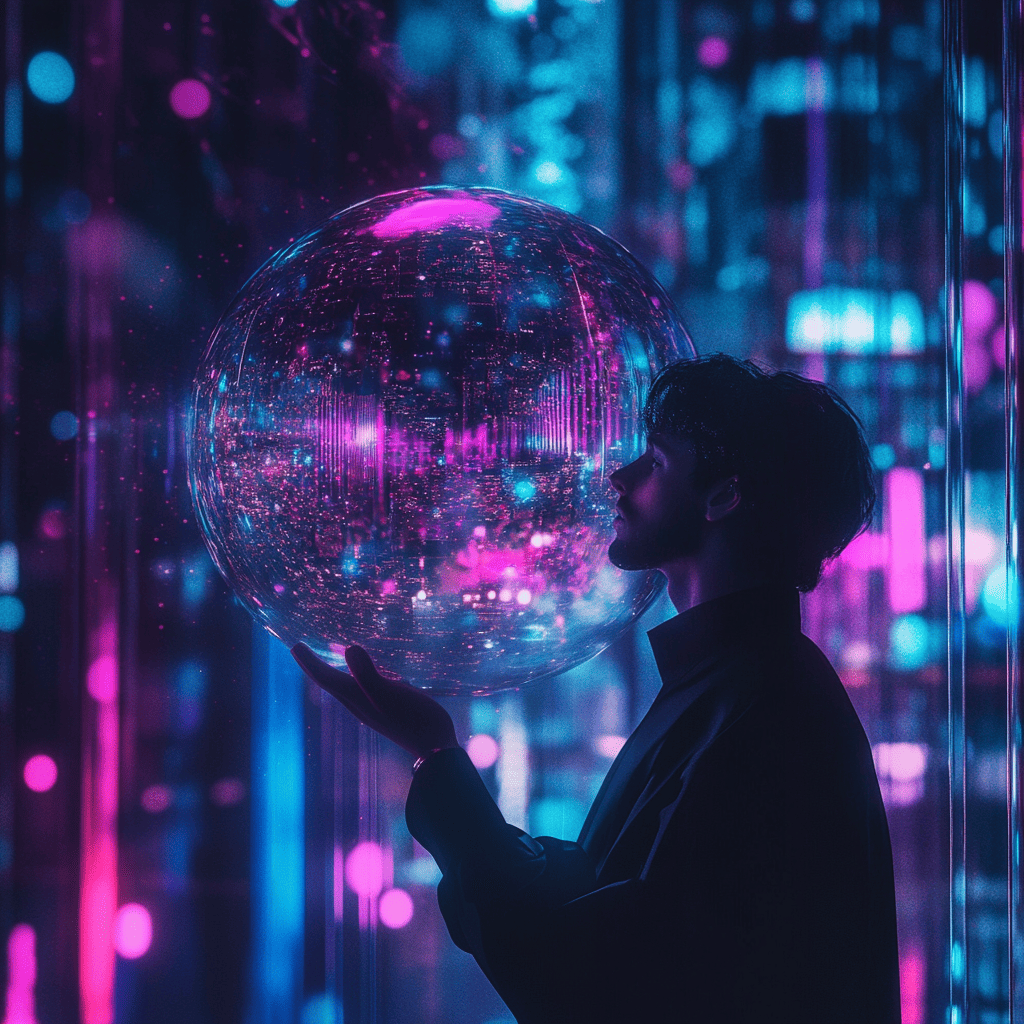Modern technologies are rethinking the boundaries of art, giving artists the opportunity to create not only on canvas or in digital programs, but also in metaverses. Virtual worlds allow the creation of interactive spaces, unique 3D installations, and animated NFTs that not only exist online, but also interact with users.
Metaverses provide artists with a new platform for self-expression and monetization of their work . Digital illustrations, sculptures, and animations can now become part of virtual galleries, cities, game worlds, and architectural spaces. All this makes art not just a static object, but part of a large-scale interactive experience.
In this article, we will look at how artists create art in metaverses, what technologies and platforms they use, and how their works become part of the new digital economy.
How do artists adapt art for metaverses?
Traditional art, even digital, needs to be adapted for the virtual space. In the metaverse, it is important not just to create an image or object, but to make it three-dimensional, interactive and functional.
Artists use tools like Blender, Unity, Unreal Engine, and Web3 platforms to transform their illustrations into full-fledged virtual environments. Now, each piece can be scalable, integrated into gameplay, or even interact with users. For example, NFT art can change depending on the time of day in the metaverse or react to the movements of avatars.
To successfully place art in the virtual world, it is important to consider its optimization. Heavy 3D models can slow down the platforms, so authors create lightweight versions of objects. Using WebGL and AR/VR technologies helps improve the quality of the visual experience without overloading the system.
Popular Digital Art Platforms in Metaverses
The choice of metaverse plays a key role in how digital art is presented. Different platforms offer unique tools, economic models, and technical features.
Top Platforms for Web3 Artists:
● Decentraland is a virtual world where you can create galleries, exhibitions and art spaces.
● The Sandbox is a platform for pixel and voxel art that allows you to monetize your content.
● Cryptovoxels is a convenient environment for hosting 3D objects and virtual museums.
● Spatial – specializes in VR art spaces where artists can interact with audiences in real time.
The choice of platform depends on the artist’s style and goals. Decentraland is ideal for large-scale art galleries, while The Sandbox is focused on gamification of content and user engagement in game mechanics.
NFTs and the Tokenization of Digital Art in Metaverses
NFTs (non-fungible tokens) have opened up new possibilities for digital art in metaverses. Now, each piece can be turned into a unique asset that can be sold, traded, or displayed in virtual spaces.
Tokenization of art in the metaverse allows artists to:
● Secure ownership of your work on the blockchain.
● Sell art directly without intermediaries and galleries.
● Receive royalties for each subsequent sale of NFT.
Additionally, NFTs can be animated or interactive elements rather than just static objects. For example, an artist could create a painting that changes colors depending on the weather in the metaverse, or a 3D sculpture that reacts to the user approaching.
How do artists make money in metaverses?
Art in the virtual world is not only creativity, but also a full-fledged business model. Metaverses offer many ways to monetize digital content, allowing artists not only to exhibit their works, but also to receive income for them in cryptocurrency.
Main sources of income:
● NFT art sales – users buy virtual paintings, 3D objects and animations.
● Paid exhibitions and events – you can organize ticketed art events in the metaverse.
● Collaborations with brands – companies engage artists to create unique content.
● Commercial design of metaverses – creation of designs for digital stores, areas, virtual offices.
Thus, art in the metaverse goes beyond the classic NFT, becoming part of the economy of virtual worlds.
The Future of Digital Art in Metaverses
Every year, metaverses become more complex and realistic, and digital art develops along with them. Virtual spaces are gradually turning into full-fledged cultural centers, where artists can experiment with new formats of creativity.
What trends are shaping the future?
● Development of AI-generated art – artificial intelligence will help create complex digital worlds.
● Interactive NFTs are works that respond to the user and adapt to the environment.
● Cross-platform metauniverses – integration of different digital worlds into a single ecosystem.
In the near future, art in metaverses will become an integral part of digital culture, and artists who have mastered new technologies will be able to take leading positions in this field.
How can artists master art in the metaverse?
To become part of the Web3 ecosystem, it is important for artists to:
● Choose a suitable platform to host your work (Decentraland, The Sandbox, Cryptovoxels).
● Master 3D modeling and adaptation of illustrations to virtual worlds.
● Turn your works into NFTs and use blockchain to protect copyrights.
● Create interactive objects and experiment with animation.
● Engage in promotion in Web3 communities and participate in metauniversal events.
Metaverses give artists a new level of freedom, opening up limitless creative and financial opportunities.
Questions and Answers
Decentraland and The Sandbox are the most popular among artists and collectors.
Yes, through NFT sales, creating virtual galleries, and collaborating with brands.
3D modeling (Blender, Unity), blockchain (NFT), AR/VR development.

